Palm trees, symbolizing victory, peace, and fertility, have become a popular choice in residential landscaping, public parks, and gardens.
With over 2,600 species, each with its unique characteristics, palm trees display a remarkable diversity.
Primarily thriving in tropical and subtropical climates, they adapt to various environments, including some warm temperate regions.
In fact, about two-thirds of palm tree species are native to tropical areas, underscoring their association with these lush locales.
Palm trees are renowned for their evergreen leaves, which are typically elongated, slender, and pointed, contributing to their elegant silhouette.
The size of palm trees varies significantly; some species can reach impressive heights of 75 to 100 feet (22 to 30 meters), while others maintain a more modest stature, growing only 6 to 9 feet (1.8 to 2.7 meters) tall.
The typical structure of a palm tree includes a straight, unbranched stem, although there are exceptions with branching stems.
This diversity in size and structure is one of the reasons why the different names for palm trees resonate with such variety.
Special Features of the Palm Trees
Historically, palm trees have carried profound symbolic significance.
Traditionally celebrated as emblems of victory and symbols representing the triumph of good over evil, their meaning has evolved.
In the contemporary context, palm trees are often associated with tropical islands and leisurely vacations, evoking images of serene beaches and relaxation.
Palm trees have long been admired for their striking appearance, enduring structure, and rich symbolic meanings, making them a favorite for both indoor and outdoor planting.
Some species of palm trees are known for their remarkable longevity, living for centuries, especially in coastal regions where they are most commonly found.
Their attractiveness largely stems from their unique physical characteristics.
The trunks of palm trees generally grow straight and can vary in form, including tall and slender, short and stout, or occasionally with three or four smaller trunks.
The leaves also exhibit diversity, primarily falling into three categories:
- Palmate (fan-shaped)
- Pinnate (feather-like)
- Costapalmate (a combination of the first two types)
Palm trees are not only aesthetically pleasing but also practical, as they are significant sources of staples such as coconuts and dates.
The tallest palm trees can reach staggering heights, with some species growing up to 197 feet.
An interesting fact about palm trees is that the Coco De Mer species boasts the largest seed of any plant worldwide.
The world of palm trees is vast, with numerous varieties each possessing unique qualities.
Among these, some of the most fascinating types include Date palms, Coconut palms, Cabbage palms, Chinese Fan palms, Christmas palms, and many others.
Most Amazing Varieties of Palm Trees
1. Date palm (Phoenix dactylifera)
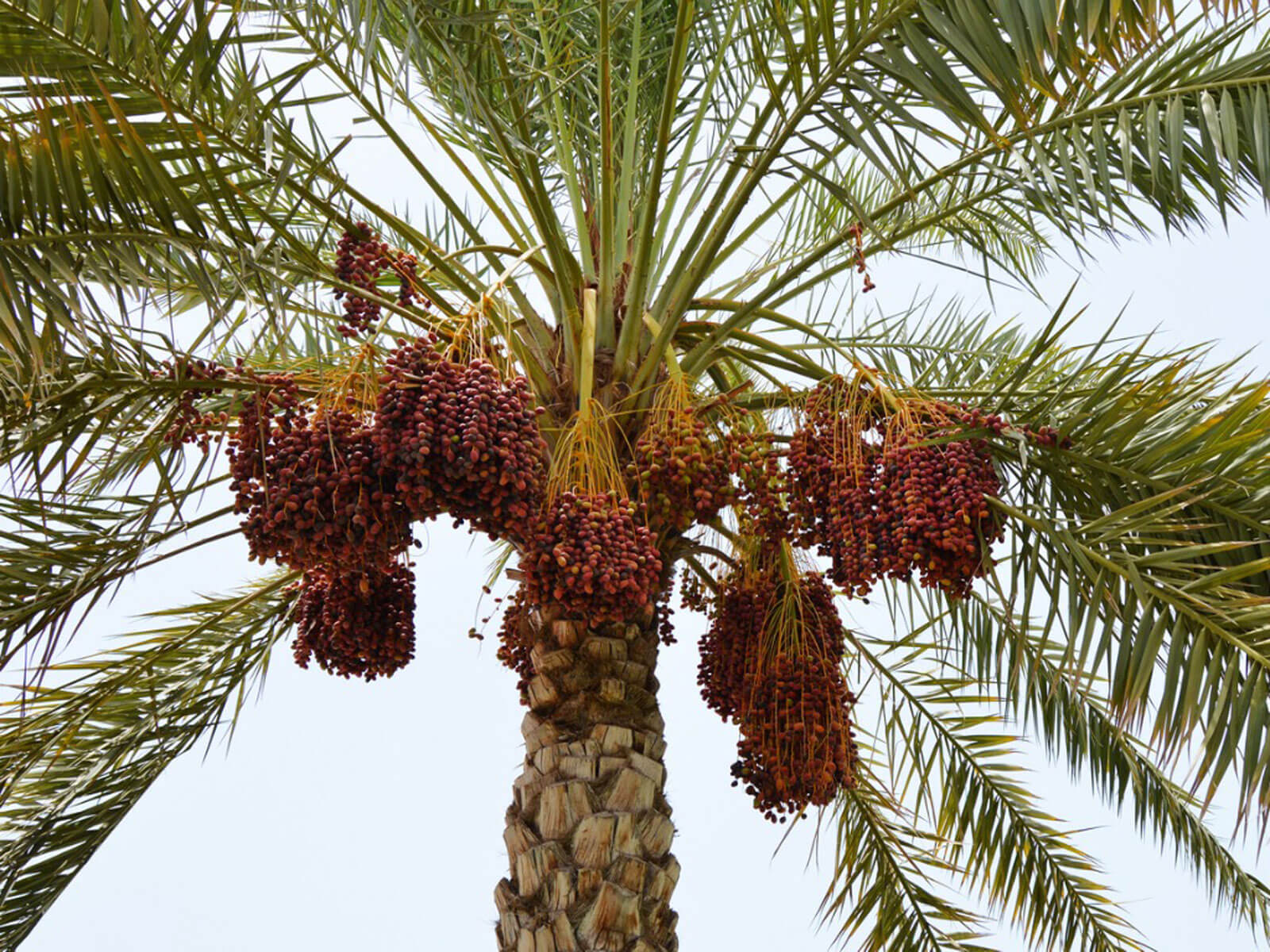
Believed to have originated in Iraq, the Date palm tree has been a staple food and a primary source of wealth in the deserts of North Africa and the Middle East.
It flourishes in regions like the Canary Islands, Northern Africa, the Middle East, Pakistan, India, Mexico, and California in the U.S.
Reaching heights of up to 75 feet (23 meters), with leaves spreading to about 16 feet (5 meters), the Date palm is a majestic sight.
It produces male and female flowers on separate plants, with fruiting beginning in 4 to 5 years and reaching full potential between 10 to 15 years.
Though Date palms can live for up to 150 years, their fruit production diminishes over time, limiting their long-term commercial viability.
However, they are utilized in various ways, from crafting furniture to producing syrup, alcohol, and other beverages.
2. Coconut Palm Tree
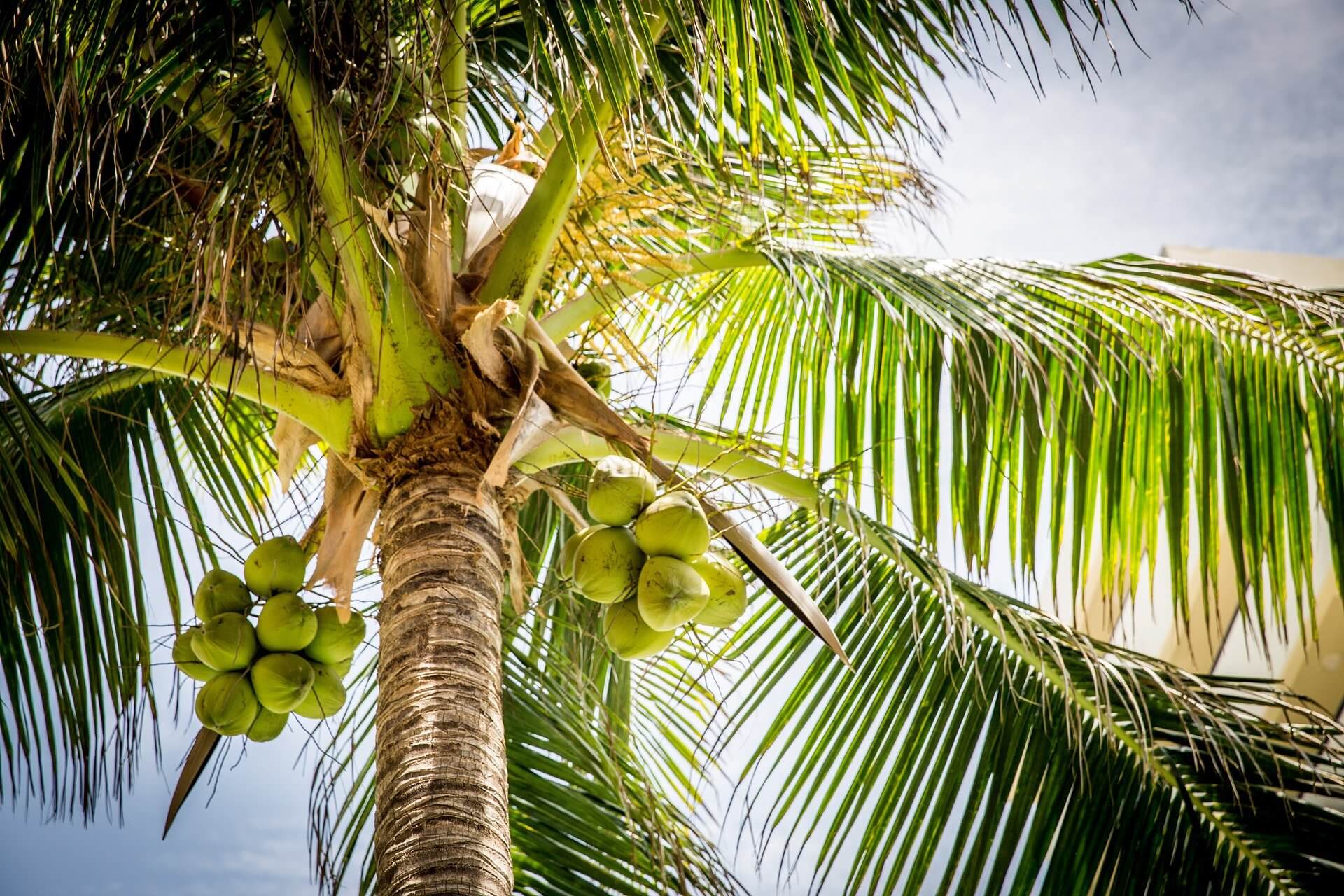
The Coconut Palm Tree, another prominent variety among palm trees, is predominantly found in coastal areas.
Belonging to the Arecaceae family, it’s believed to have originated in the Indo-Malaya region.
This palm tree can grow to about 80 feet (25 meters) tall, with feather-like leaves that are 4 to 6 meters long.
The tree’s fruit, the coconut, is a fundamental part of many cultures around the world. Coconut oil, extracted from the fruit, is widely used for cooking and as a hair treatment.
The coconut milk, derived from its meat, is a key ingredient in various culinary dishes.
Additionally, the hard outer shell of the coconut lends itself to various crafts and utility items.
From basket weaving to beverage production, the Coconut Palm Tree is a testament to the functional diversity of palm trees.
3. Cabbage Palm Tree (Sabal Palmetto)
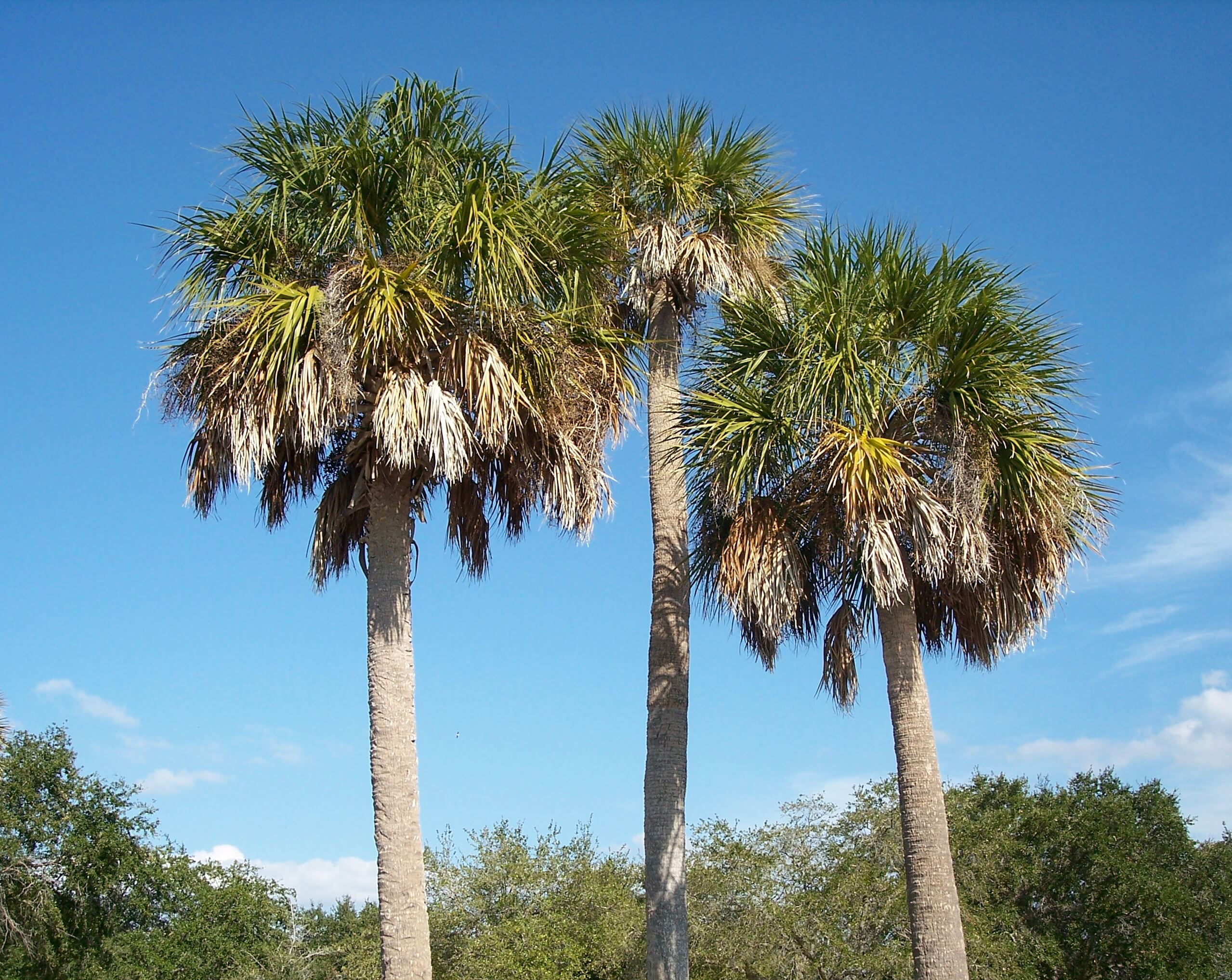
The Cabbage Palm Tree, also known as Sabal Palmetto, is a prominent species among palm trees, especially in the Southeastern U.S. and the West Indies.
Notably, it holds the distinction of being the state tree of Florida and South Carolina.
Reaching heights of up to 80 feet (24 meters), the Cabbage Palm Tree features distinctive fan-shaped leaves, typically 3-4 meters long.
Its straight, upward-growing form makes it a striking presence.
The leaves of this palm tree are not just ornamental; they are often utilized in making mats, baskets, and sometimes even stiff brushes.
The flowers of the Cabbage Palm Tree are bisexual and fragrant, contributing to its appeal.
The fruits are smooth, round, and shiny, classified as monocots.
4. Chinese Fan Palm Trees (Livistona Chinensis)
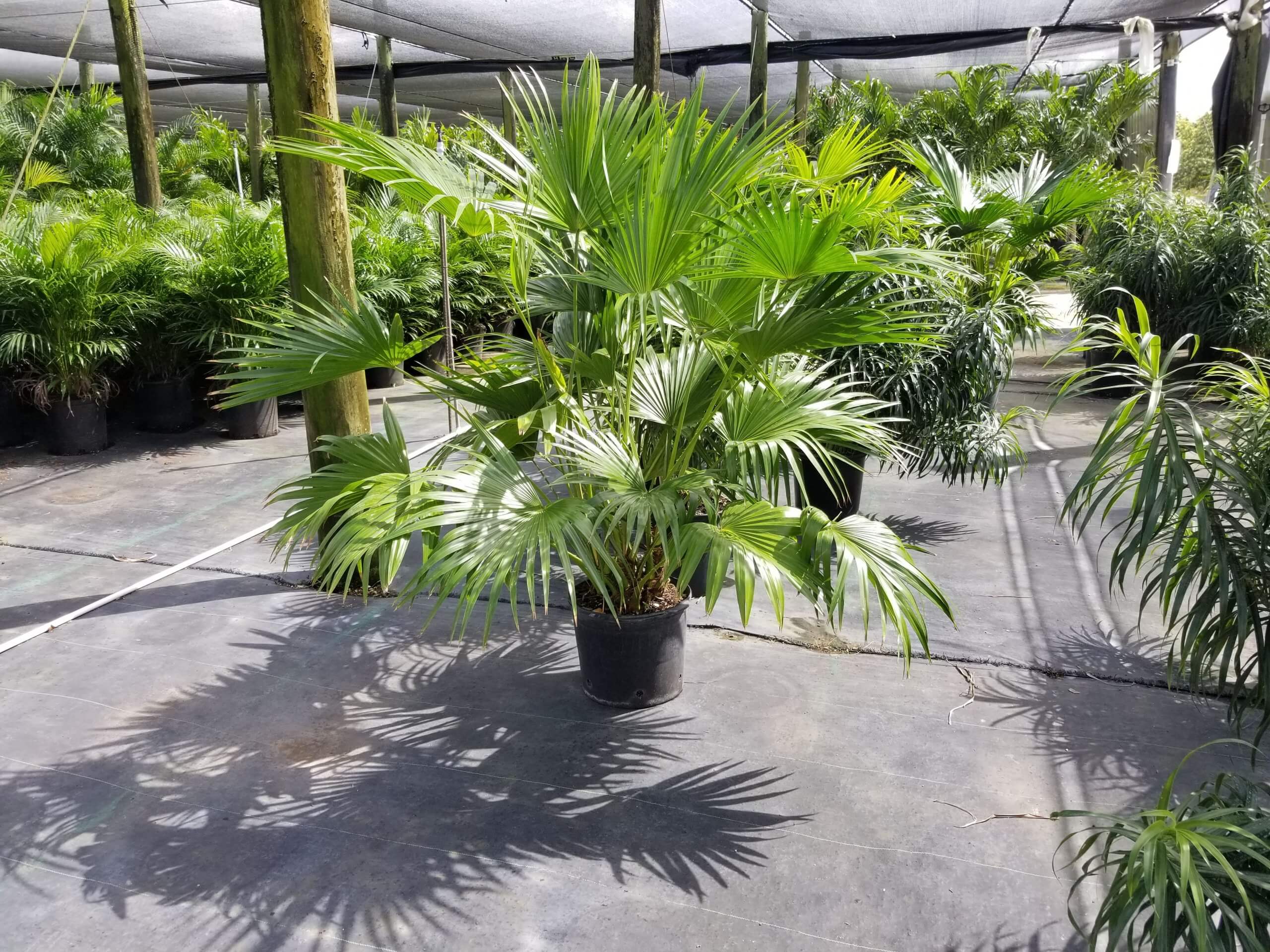
The Chinese Fan Palm Tree, scientifically known as Livistona Chinensis, is a member of the Arecaceae family and is believed to originate from Japan, Taiwan, and Southern China.
This palm species has become a staple in various regions, including Hawaii, Bermuda, Puerto Rico, and the Dominican Republic, due to its ornamental value.
Widely planted in expansive parks and gardens, the Chinese Fan Palm Tree is also a popular choice for private gardens, symbolizing peace and happiness.
This species typically reaches a height of up to 15 meters, with leaves spreading approximately 1 meter long.
The tree produces round fruits with a fleshy covering that turns black or blue upon ripening.
5. Christmas Palm Tree (Adonidia merrillii)
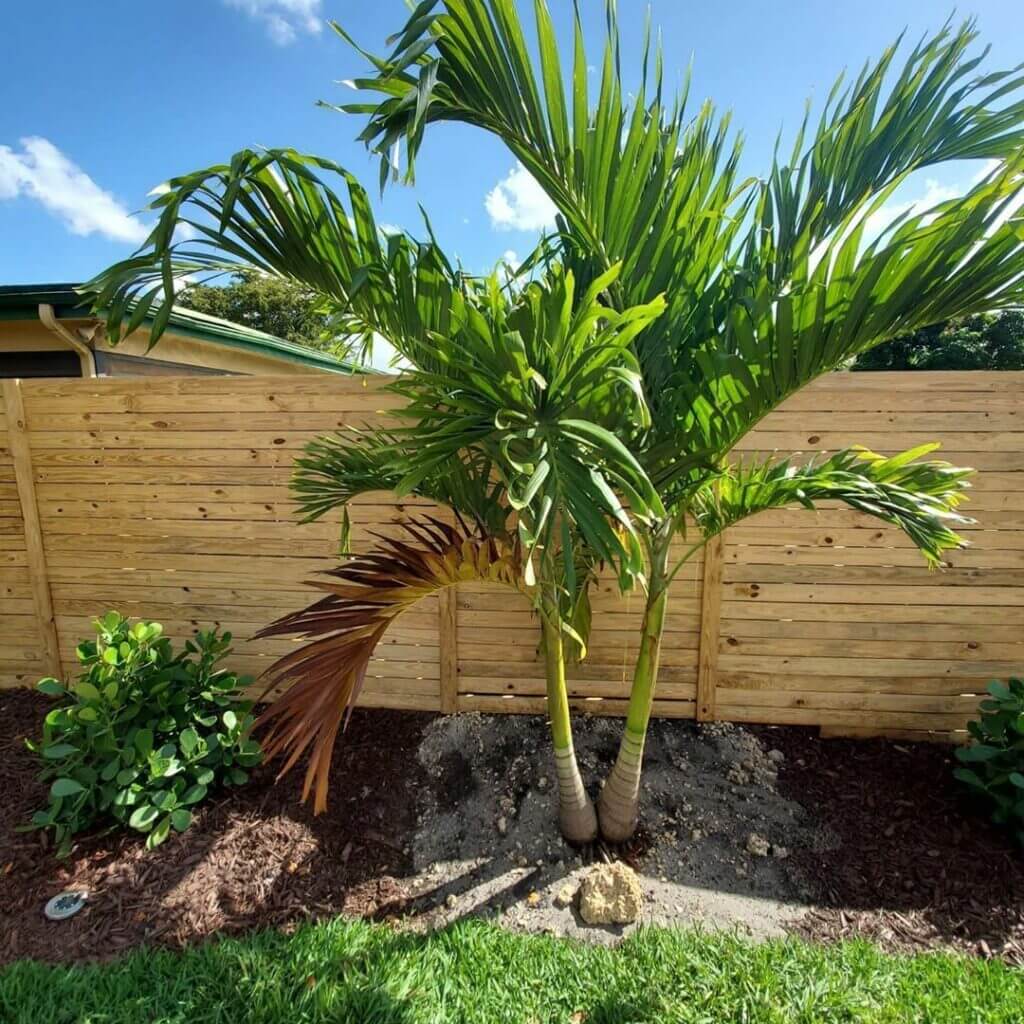
The Christmas Palm Tree, known scientifically as Adonidia merrillii, is especially renowned in Florida.
This palm tree has various names, such as the Royal Palm Tree and Dwarf Royal Palm Tree, each reflecting a different aspect of its elegance and peaceful presence.
Its addition to home decor is greatly appreciated worldwide.
Native to the small islands of the Philippines, north of Malaysia and Indonesia, the Christmas Palm Tree is a member of the Arecaceae family.
Its leaves boast a rich, deep green color and measure 5-6 feet in length.
The tree produces unisexual flowers that start as light green and gradually turn into a creamy bloom.
This species typically reaches a height of up to 25 feet.
6. Triangle Palm Tree
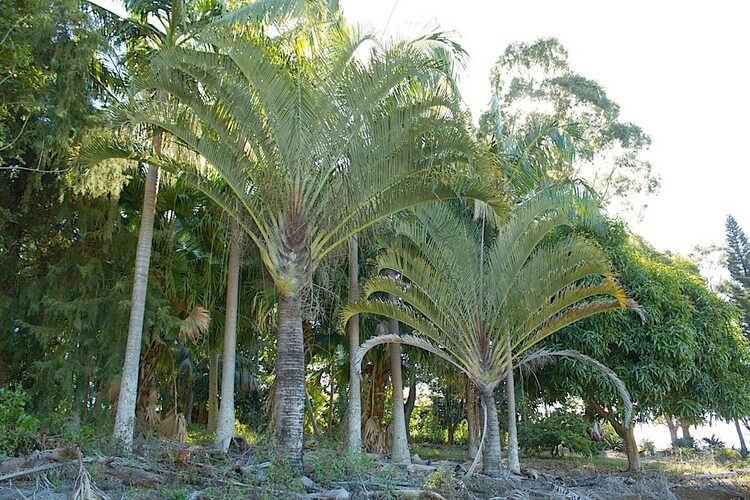
The Triangle Palm Tree, scientifically referred to as Dypsis decaryi, is distinctively named for its triangular shape, which is fully realized when the tree matures.
This unique structural formation greatly enhances the aesthetic appeal of the environments in which it is planted.
Originating from Madagascar, the Triangle Palm Tree is a member of the Arecaceae family.
It grows in a straight, upright manner, with pinnate leaves that can extend about 10 feet long and 3 feet wide.
The tree is notable for its yellowish-green flowers, with both male and female flowers present on the same plant.
This species flowers year-round, adding continuous vibrancy to its surroundings.
The Triangle Palm typically reaches heights of 10-20 feet and a width of 10-15 feet, contributing to the diverse range of names for palm trees and their distinct appearances.
7. Windmill Palm Tree (Trachycarpus fortunei)
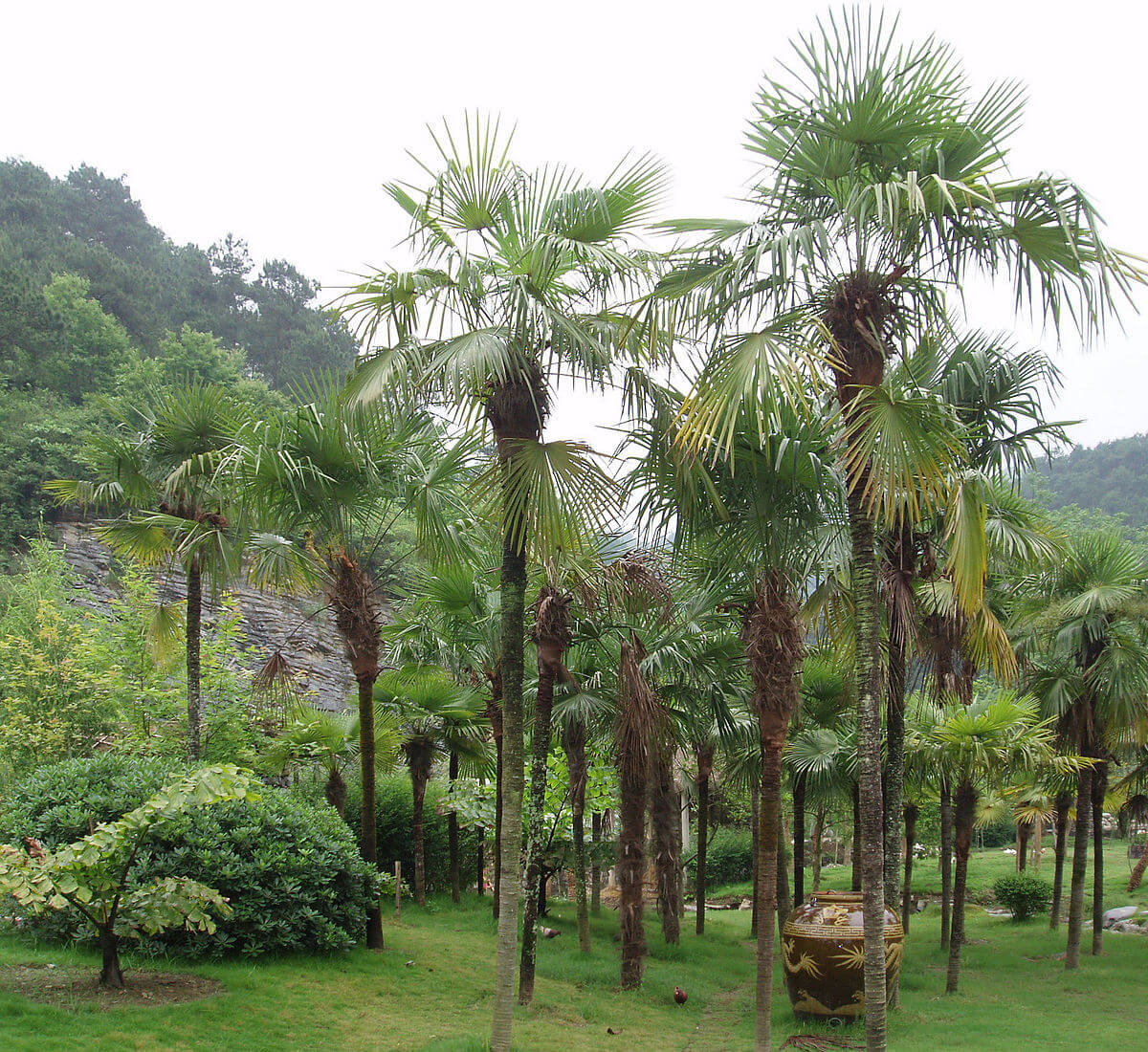
The Windmill Palm Tree, known scientifically as Trachycarpus Fortunei, can reach heights of up to 66 feet.
It is native to regions like China, Japan, India, and Myanmar, and is a part of the Arecaceae family.
This palm tree is distinguishable by its yellow (male) and greenish (female) flowers, which add to its visual appeal.
Beyond its ornamental use in gardens and parks, the Windmill Palm Tree has practical applications; its fibers are used in the production of sacks and ropes.
Known for its hardiness, the Windmill Palm Tree is a resilient addition to the diverse world of palm trees.
8. Lady Palm Tree (Rhapis Excelsa)
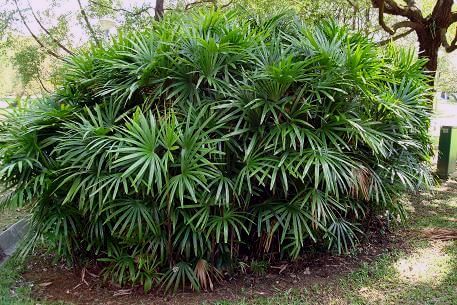
The Lady Palm Tree, or Rhapis Excelsa, is a versatile species that can grow between 3 to 12 feet tall.
It is known for its broad, dark, pointy green leaves, which are typically fan-shaped and about 15 to 20 cm wide.
This palm tree is ideal for enhancing the aesthetic of both indoor and outdoor spaces, reaching heights of 6-12 feet when planted outdoors.
Believed to originate from China, the Lady Palm Tree has a rich history.
In Japan, it was traditionally planted around palaces as a symbol of protection against evil forces.
9. Ponytail Palm Tree (Beaucarnea Recurvata)
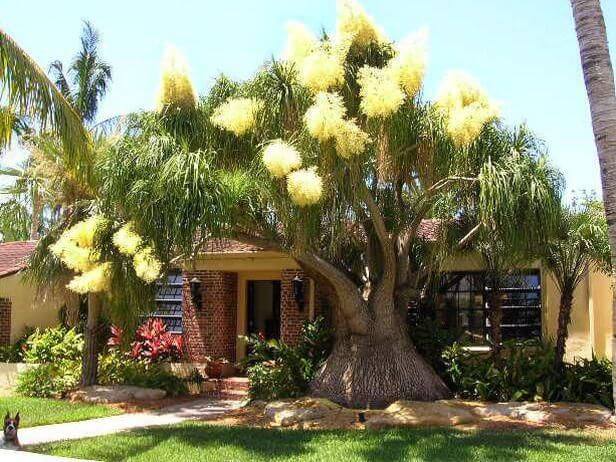
The Ponytail Palm Tree, also known as Beaucarnea Recurvata, is affectionately referred to as the Bottle Palm Tree or Elephant Foot Tree due to its distinctive shape.
This species is a unique addition to any landscape, significantly enhancing its beauty.
Interestingly, despite its name, the Ponytail Palm is a type of succulent rather than a true palm tree.
Originating from regions such as Tamaulipas, Veracruz, and San Luis Potosí in eastern Mexico, it belongs to the Asparagaceae family.
The Ponytail Palm can reach heights of up to 15 feet 6 inches (4.72 meters), with leaves that extend 90 to 180 inches long and 15 to 20 millimeters wide, adding a distinctive flair to the array of names for palm trees.
10. Needle Palm Tree (Rhapidophyllum Hystrix)
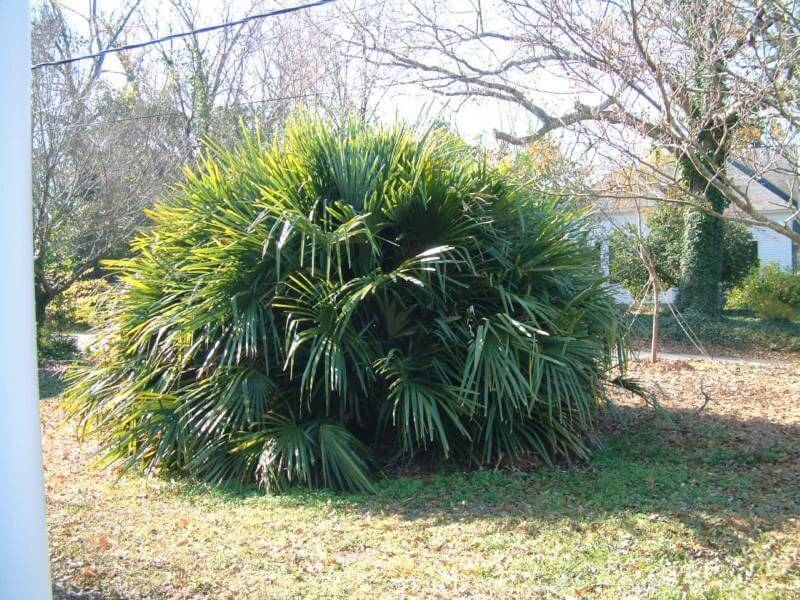
The Needle Palm Tree, scientifically known as Rhapidophyllum Hystrix, is celebrated for being one of the most cold-hardy palm trees in the world.
It thrives in the coastal margins of the subtropical eastern Gulf and South Atlantic states in the United States, adapting well to warm temperate climates.
This palm tree is relatively compact, with stems growing to a height of about 3.3 to 3.9 feet (1 to 1.2 meters).
Notably, it features sharp, needle-like spines between the leaves, which are typically 10 to 25 cm (3.9 to 9.8 inches) long.
The Needle Palm Tree can reach an overall height of 6 to 10 feet (2 to 3 meters).
11. Pygmy Palm Tree (Phoenix Roebelenii)
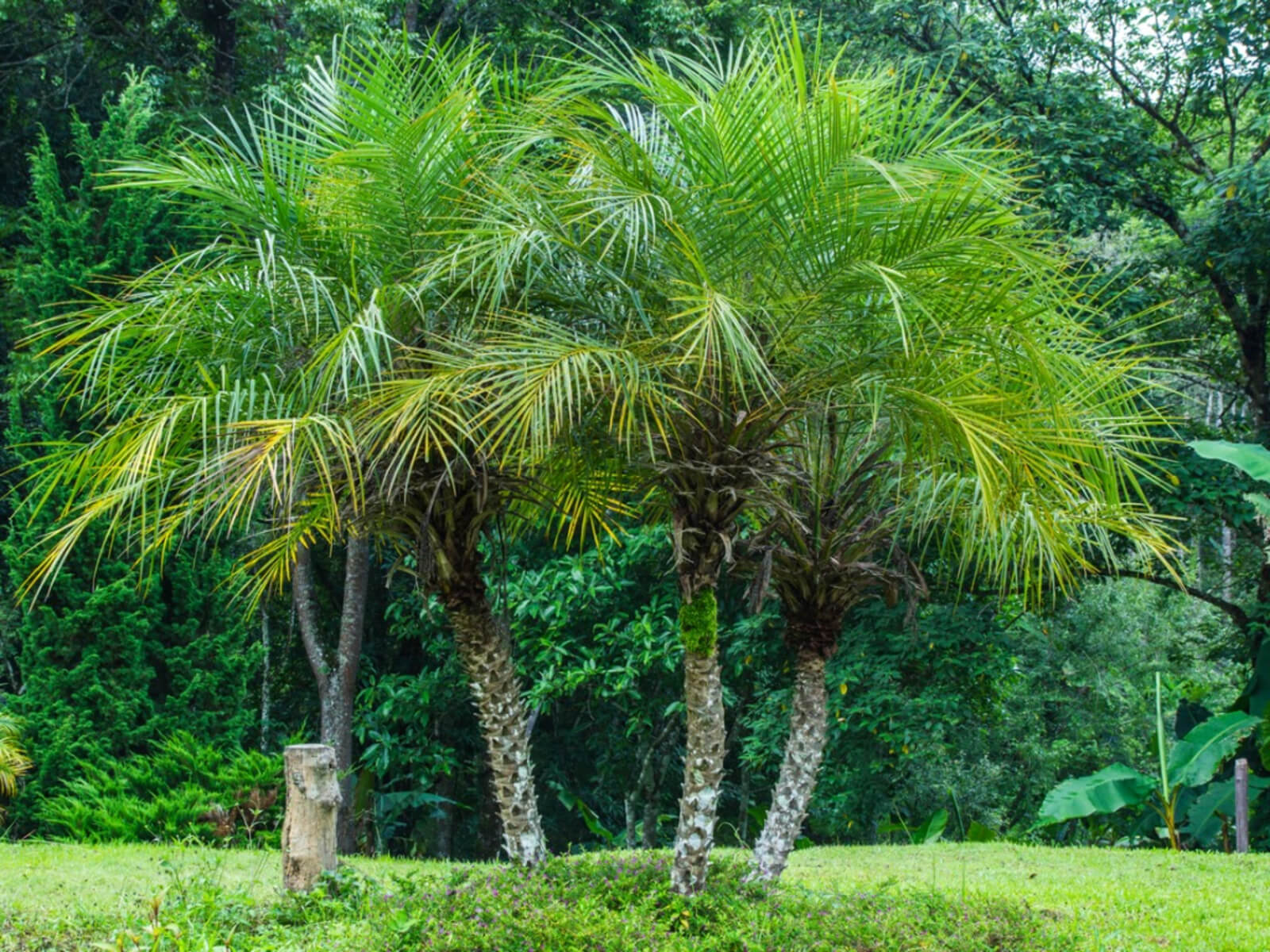
The Pygmy Palm Tree, or Phoenix roebelenii, is a petite yet graceful member of the Arecaceae family, believed to have originated from Asia.
This palm tree is relatively small, typically growing up to 6 feet in height with a spread of 3 to 5 feet wide.
Favored for its subtropical spreading charm, the Pygmy Palm is often found in indoor settings, where its long, feather-like green leaves become a focal point of decor.
These leaves range from 24 to 45 inches in length.
The tree produces cream-colored male and female flowers on separate plants, with the female plants bearing red-brown fruits.
12. Mediterranean Dwarf Palm Tree (Chamaerops humilis)
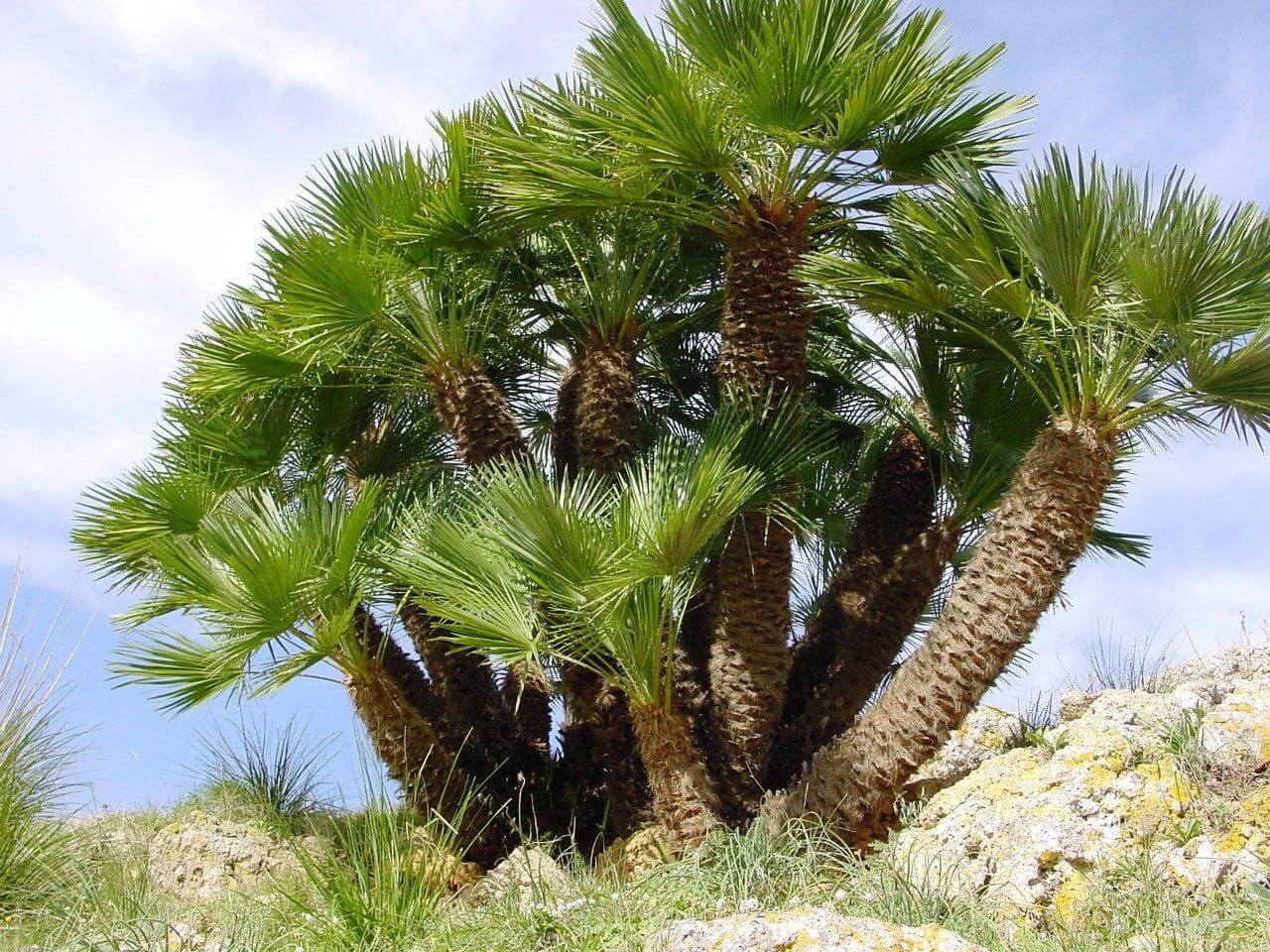
The Mediterranean Dwarf Palm Tree, known scientifically as Chamaerops humilis, is indigenous to continental Europe.
This species is particularly suited to the harsh conditions of sandy or rocky terrains and is emblematic of Mediterranean vegetation, especially in the southwest of Europe.
Typically, this dwarf palm tree grows to about 5 feet (1.5 meters) tall.
It features fan-shaped leaves that extend approximately 15 inches in length.
When grown indoors, this palm tree usually does not produce flowers or fruits.
In their natural habitat, the flowers, which are often yellow, can be unisexual or bisexual, appearing on separate or the same plants.
13. Pindo Palm Tree (Butia Capitata)
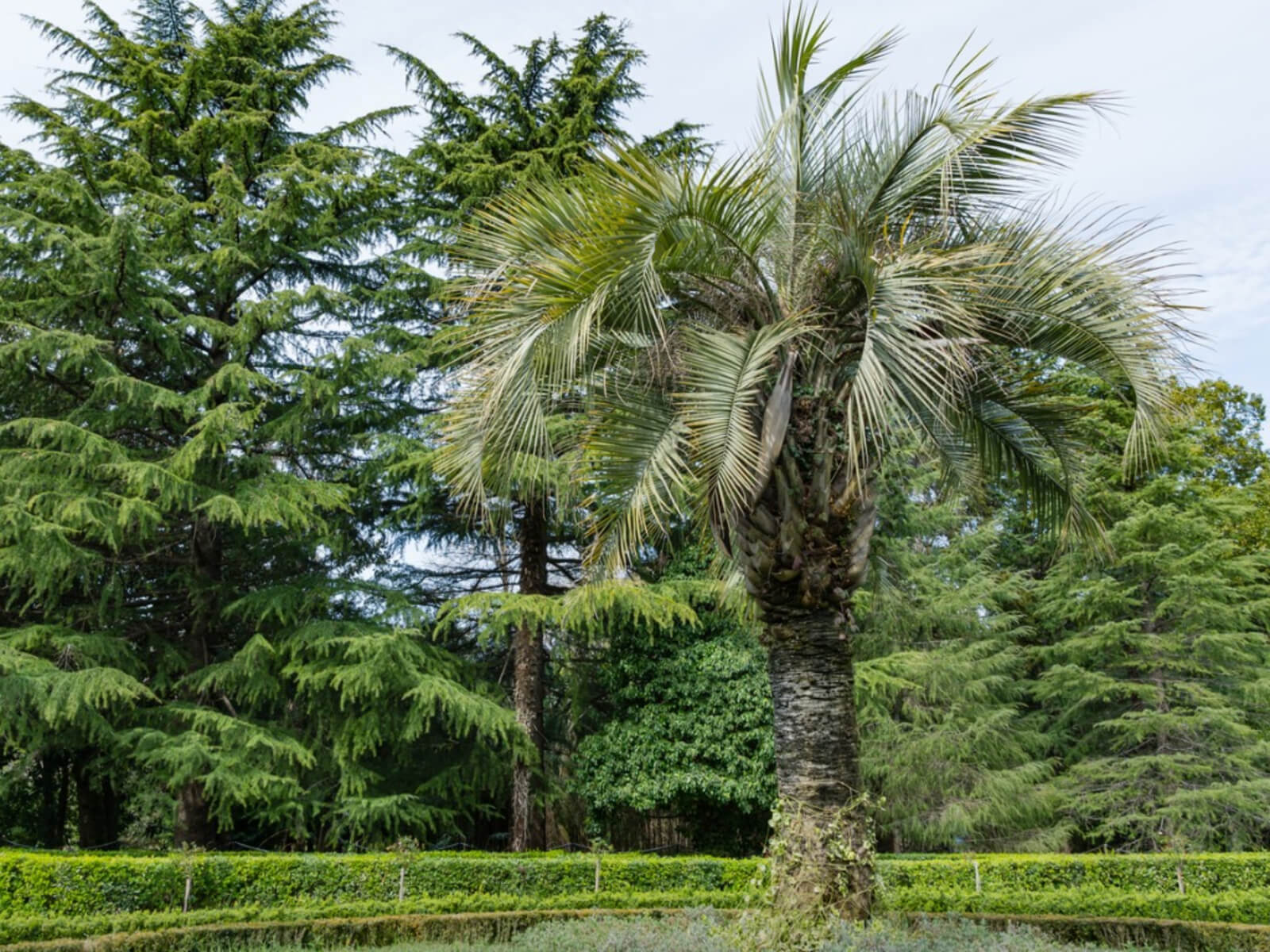
The Pindo Palm Tree, also known as Butia capitata, originates from the Brazilian states of Minas Gerais and Goiás.
It typically reaches a height of 8 to 10 meters. This palm is characterized by its feather-like leaves, lending it a graceful appearance.
Commonly referred to as the Jelly Palm, the Pindo Palm produces flowers that can be red, white, or yellow, often arranged in groups with two male flowers and one female flower.
The flowering season runs from May to July, with fruit appearing from November to February.
The fruits of the Pindo Palm are not only attractive but also edible, used in the preparation of juices, liquors, marmalades, and ice creams.
14. Mazari Palm Tree (Nannorrhops Ritchiana)
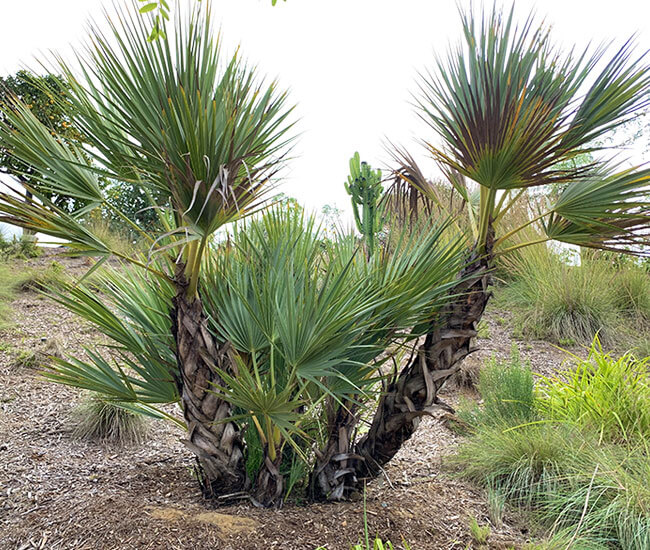
The Mazari Palm Tree, known by its scientific name Nannorrhops Ritchiana, is a unique and somewhat rare species within the palm family, Arecaceae.
It is native to the rugged landscapes of Afghanistan and Pakistan.
This palm tree typically grows to a height of 10 to 20 feet and spans about 5 to 10 feet wide.
The leaves of the Mazari Palm extend approximately 2 feet in length and are composed of 20 to 30 leaflets, each measuring 1 to 2 feet.
Notably, the flowers of this palm tree develop on separate plants.
15. Sago Palm Tree (Cycas Revoluta)
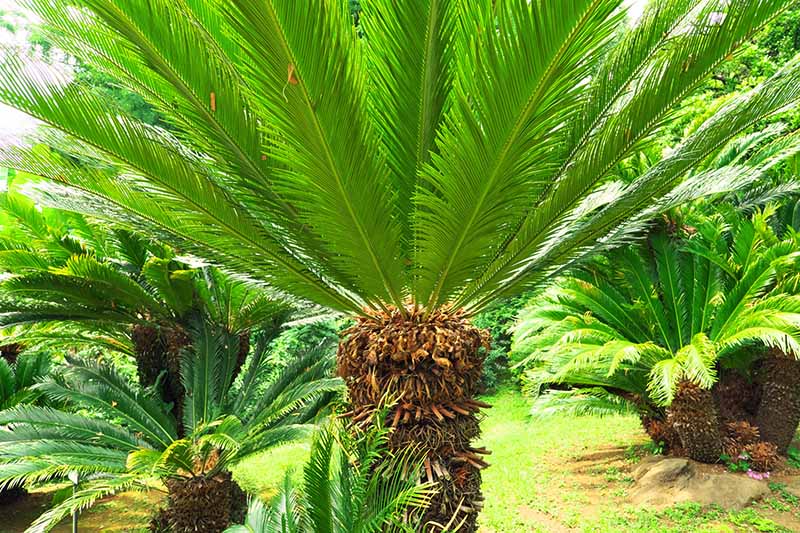
The Sago Palm Tree, scientifically known as Cycas Revoluta, is a notable gymnosperm belonging to the Cycadaceae family.
Its native habitat includes southern Japan and the Ryukyu Islands.
Renowned as one of the most ancient plant species, the Sago Palm has been a part of the Earth’s flora since prehistoric times.
While it is relatively easy to cultivate, caution is advised as all parts of the tree are poisonous.
The Sago Palm Tree’s growth rate is slow, often taking 50 to 100 years to reach its maximum height of around 20 feet.
Its leaves, resembling feathers, spread approximately 50 to 100 cm, adding a prehistoric charm to the diverse names of palm trees.
Additional Notable Palm Trees
Other well-known varieties that add to the diversity of names for palm trees include:
- Bamboo Palm Tree
- Blue Mediterranean Palm Tree
- Mexican Palm Tree
- Majesty Palm Tree
- Yucca Palm Tree
Conclusion
The varieties of palm trees discussed above represent just a fraction of the extensive and popular species found globally.
Palm trees have been an integral part of human civilization for centuries, from carrying deep religious symbolism to playing vital roles in our daily lives.
Their versatility, beauty, and utility underscore why they are so cherished and widely planted.
Each variety, with its unique name and characteristics, contributes to the rich tapestry of our natural world.

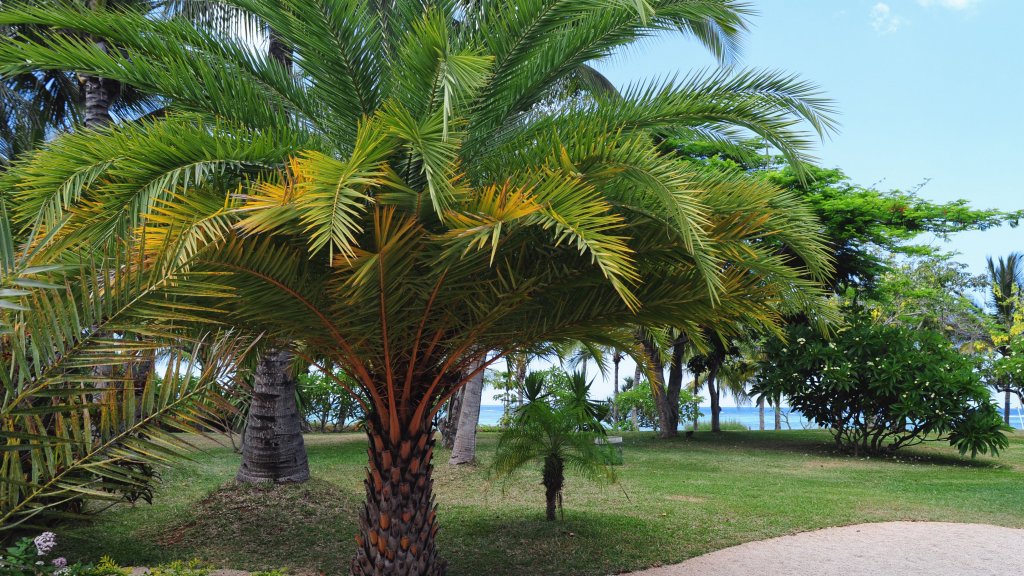
I was hoping to see and hear about the sealing wax palm aka lipstick palm.
I’m going to buy one to keep on my terrace.
They are such beautiful palms, one takes a second look